Beyond Passwords: Implementing Robust Authentication & Authorization in NiFi
Big Data
5 MIN READ
April 22, 2024
![]()
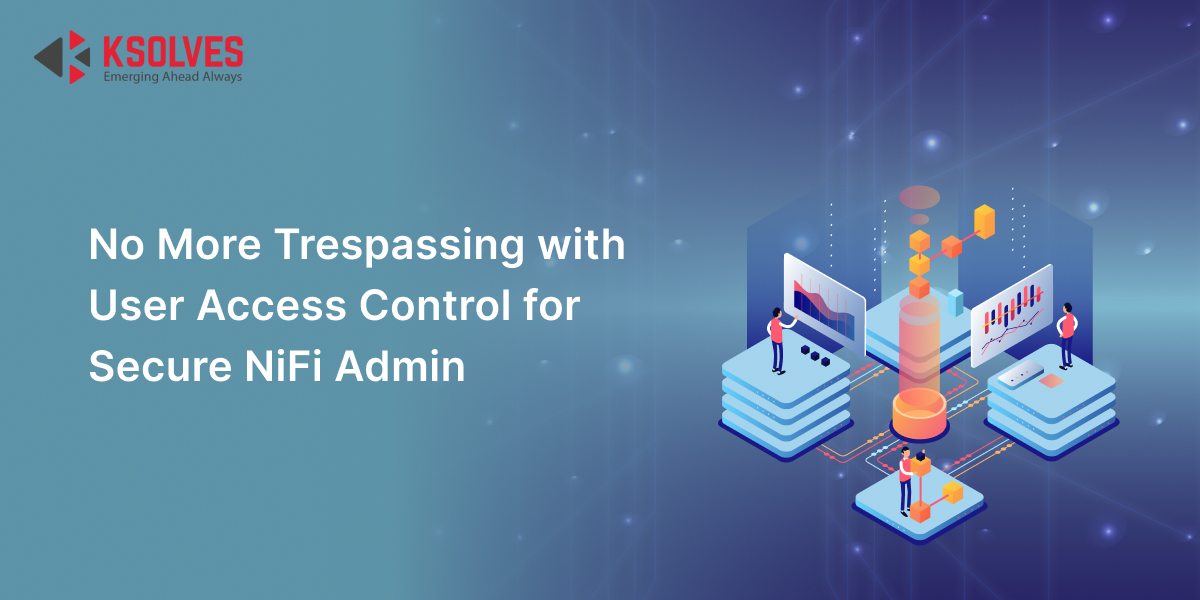
Data is the real gold for organizations these days. The urge to be outstanding in the market by providing a personalized experience can only be fulfilled by data-driven smart decision-making. Hence, data protection has become a real concern.
Talking about recent studies more than 2540 companies have inculcated Apache Nifi for data security. Password protection has always been considered to be the best way. However traditional authentication comes with inherent limitations that can compromise security.
This blog delves into the significance of implementing secure user access in the Apache Nifi cluster and explores much about it. We also are going to find How to set up a secure Apache NiFi?
But before that, we are going to delve into some basics!
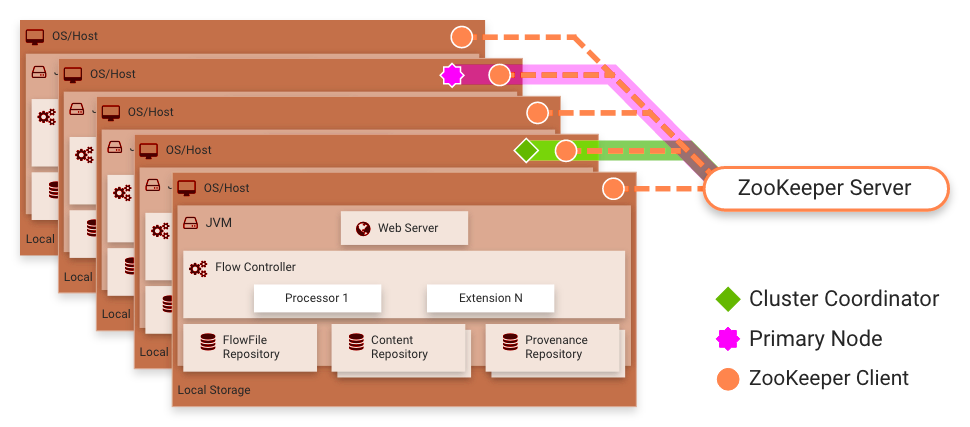
What is Apache Nifi?
Talking about Apache Nifi, it is an open-source data integration tool. It allows automation of data flow between the systems. It has a user-friendly interface that allows users to design and manage data flows.
It supports the efficient transfer, transformation, and routing of data across various sources and destinations. This makes it a versatile solution for data orchestration and integration in enterprise environments.
Apache Clusters:
An Apache cluster refers to a group of interconnected servers running Apache software. This is typically used to enhance performance, provide high availability, and distribute workloads across multiple machines.
It improves reliability and scalability.
How to Setup a Secure Apache NiFi?
Here is the procedure that will help you understand the process of setting up a secure Apache NiFi:
HTTPS Configuration:
- Enable HTTPS for NiFi to encrypt data in transit.
- You have to generate or obtain NiFi SSL configuration certificates and configure NiFi to use them.
Authentication:
- Implement strong authentication mechanisms, such as LDAP or Kerberos, to control user access.
- You have to avoid relying solely on default password-based authentication.
Authorization Policies:
- Define granular access policies to control user permissions within NiFi.
- Next, you have to fine-tune access based on roles and responsibilities.
Firewall Rules:
Restrict network access to NiFi nodes using firewalls to minimize exposure to potential security threats.
Secure Keystore Management:
- Safeguard sensitive information, such as passwords and keys, by using secure key stores.
- You have to regularly update and rotate these credentials.
Audit Logging:
- Enable comprehensive audit logging to monitor and track user activities, helping in identifying and responding to potential security incidents.
Data Encryption:
- Implement encryption for data at rest to protect sensitive information stored within NiFi repositories.
Regular Updates:
- Keep NiFi and its dependencies up-to-date with the latest security patches and updates to address potential vulnerabilities.
Secure NiFi Registry:
- If you are using NiFi Registry then you have to apply similar security measures to ensure the integrity and confidentiality of stored flow definitions.
The Problems with Passwords
Brute-Force Attacks:
- Passwords are more likely to brute-force attacks.
- The automated tools systematically try various combinations until the correct one is found.
- This poses a huge significant risk to the Apache NiFi dataflow management system.
- This situation becomes ideal especially when passwords are weak or easily guessable passwords are used.
Phishing:
- Another thing that you need to know while using a password to protect your data is phishing.
- Unknowingly disclose their passwords through phishing attacks. It compromises the security of the Apache NiFi cluster.
Usually, such malicious activities are carried out by deceptive mail or websites to trick users. This can release sensitive information.
Credential Reuse:
- Many users tend to reuse passwords across multiple platforms.
- If a password used for Apache NiFi SSL configuration is compromised elsewhere, it can potentially lead to unauthorized access and data breaches within the NiFi environment.
A Shift to Password-less Authentication
Growing Adoption:
- A lot of businesses are now opting for password-less authentication keeping the vulnerability of password protection.
- It is becoming relevant in securing Apache Nifi dataflow management. It is protecting sensitive data.
Enhanced Security:
- Password-less authentication methods like biometrics, token-based systems, or public-key cryptography, provide enhanced security by eliminating the risks associated with passwords.
- This also offers a more robust defense against unauthorized access and mitigates the impact of common attack vectors.
Improved User Experience:
- Password-less authentication not only enhances security but also improves the overall user experience by reducing the burden of remembering complex passwords.
- This is crucial for maintaining a seamless and efficient Apache NiFi SSL configuration and dataflow management process.
Implementing Authorization Strategies
Authorization Concept:
- The step of authorization is crucial to secure Apache NiFi deployment, and controlling user access to specific resources.
- It defines permissions, ensuring only authorized users can perform certain actions within the NiFi environment.
Role-Based Access Control (RBAC):
- It is a widely adopted approach. Here the permissions are assigned based on pre-defined roles. In Apache NiFi access control, administrators can define roles that can simplify the management of user permission.
- These roles can be admin and viewer.
Granular Access Policies:
- You have to create fine-grained access only to necessary Nifi resources.
- It enhances security and minimizes the risk of unauthorized actions.
Attribute-Based Access Control (ABAC):
- ABAC extends access control by considering attributes such as characteristics, time, and environmental conditions.
- It allows for dynamics, and context-aware access decisions, providing an advanced layer of security in dataflow management.
Apache NiFi Security Features and Configuration Options
NiFi SSL configuration: Secure data in transit by configuring SSL for Apache NiFi, encrypting communication between nodes.
Authentication Methods: Implement various authentication methods such as LDAP, Kerberos, or OAuth for robust user verification.
Access Control Policies: Utilize access control policies to define granular permissions for users, ensuring secure Apache NiFi access control.
Data Encryption: Enable encryption for data at rest to safeguard sensitive information stored within NiFi repositories.
Auditing and Monitoring: Leverage built-in audit logging to monitor user activities, facilitating timely response to security incidents.
Apache NiFi Access Control
Role-Based Access Control (RBAC): Assign roles to users or groups, streamlining access permissions based on predefined roles.
User and Group Management: Effectively manage user access by organizing them into groups, simplifying the assignment of access policies.
Fine-Grained Permissions: Create detailed access policies to control user actions on specific NiFi resources, enhancing security and compliance.
Apache NiFi Use Cases:
Data Ingestion: Apache NiFi excels in efficiently ingesting data from diverse sources, enabling seamless integration and processing.
Data Transformation: Utilize NiFi’s capabilities to transform and enrich data as it moves through the data flow, ensuring compatibility with downstream systems.
Real-Time Data Streaming: Implement NiFi for real-time data streaming scenarios, facilitating continuous data movement and processing.
IoT Integration: Leverage NiFi for IoT use cases, managing and processing data streams from a multitude of IoT devices.
Step-by-Step Guide to Setting Up a Secure Apache NiFi Cluster:
Install Apache NiFi:
- Download the latest version of Apache NiFi.
- Follow the installation instructions for your operating system.
SSL Configuration:
- Generate SSL certificates for secure communication.
- Configure NiFi to use SSL to encrypt data in transit.
Authentication Setup:
- Choose and configure authentication mechanisms (e.g., LDAP, Kerberos, OAuth).
- Avoid default password-based authentication for enhanced security.
Access Control Policies:
- Define Role-Based Access Control (RBAC) for user roles.
- Establish fine-grained access policies to control user permissions.
Firewall Rules:
- Restrict network access to NiFi nodes using firewall rules.
- Minimize exposure to potential security threats.
Secure Keystore Management:
- Safeguard sensitive information (e.g., passwords, keys) using secure keystores.
- Regularly update and rotate credentials.
Audit Logging:
- Enable comprehensive audit logging to monitor and track user activities.
- Facilitate identification and response to potential security incidents.
Data Encryption at Rest:
- Implement encryption for data at rest within NiFi repositories.
- Protect sensitive information stored in the cluster.
Regular Updates:
- Keep NiFi and its dependencies up-to-date with the latest security patches.
- Address potential vulnerabilities promptly.
Cluster Configuration:
- Set up multiple NiFi nodes for high availability and load distribution.
- Configure cluster properties to ensure seamless communication and failover.
Testing and Monitoring:
- Conduct thorough testing of the secure NiFi cluster.
- Implement monitoring tools to continuously track the cluster’s health and performance.
These are the steps that can help the administrator establish a robust and secure Apache NiFi cluster safeguarding data flow. This ensures the integrity of the entire data management process.
Conclusion
Driving from password-to-password-less data protection needs advanced technology implementation. Apache NiFi provides robust authentication and authorization. LDAP, Kerberos, and RBAC help you to strengthen user verification and access control.
Companies like Ksolves specialize in Apache NiFi solutions. They offer expertise in configuring secure authentication, access control policies, and advanced security measures. At Ksolves we make sure that you get a tailored approach, fortifying your NiFi deployment against potential threats and fraud.
![]()
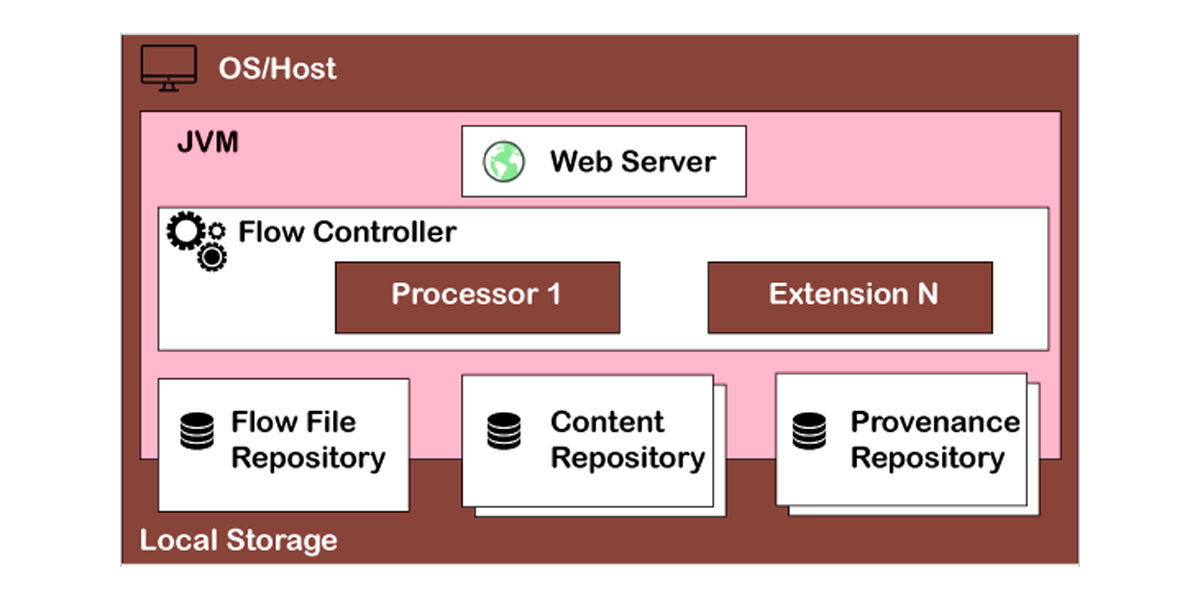
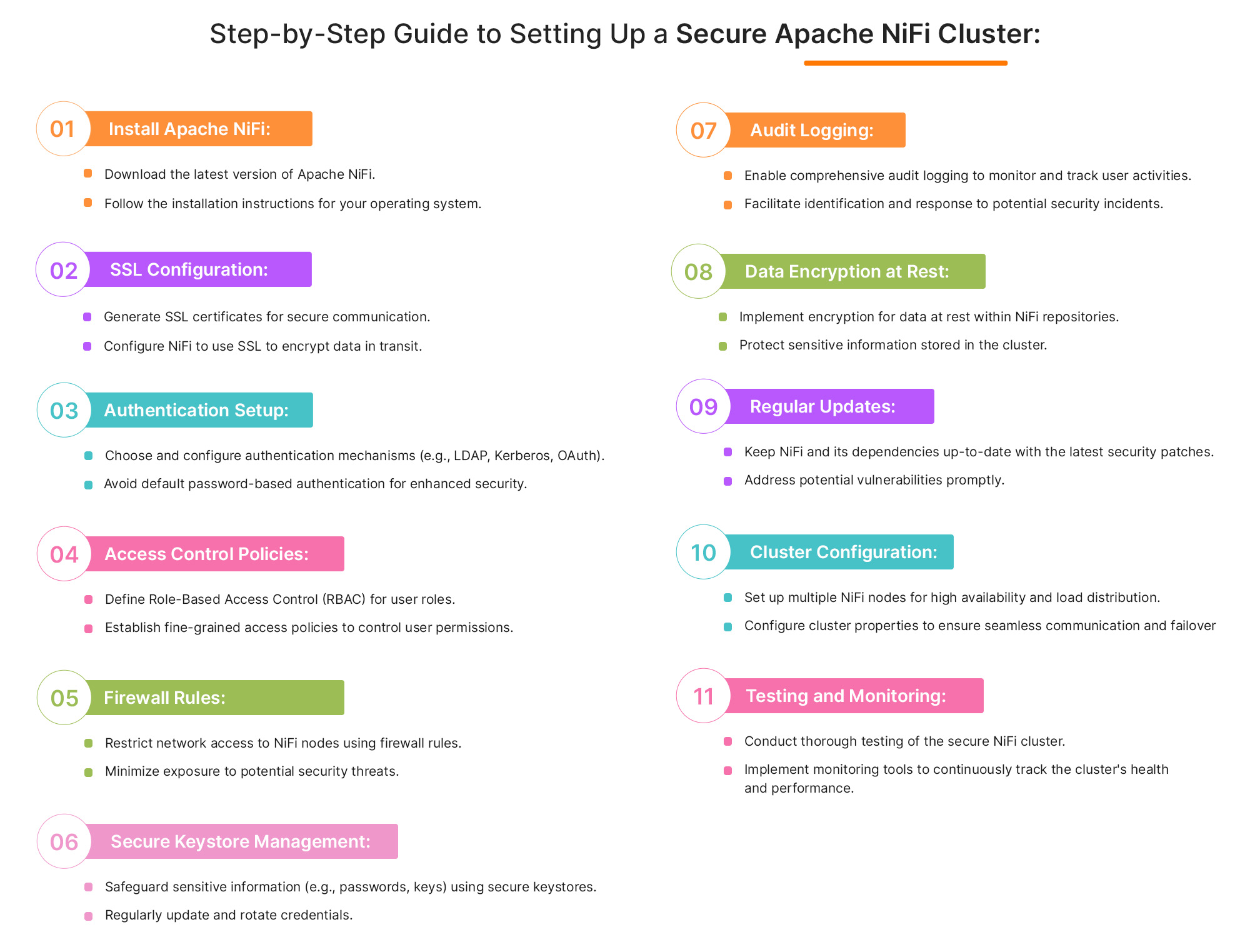

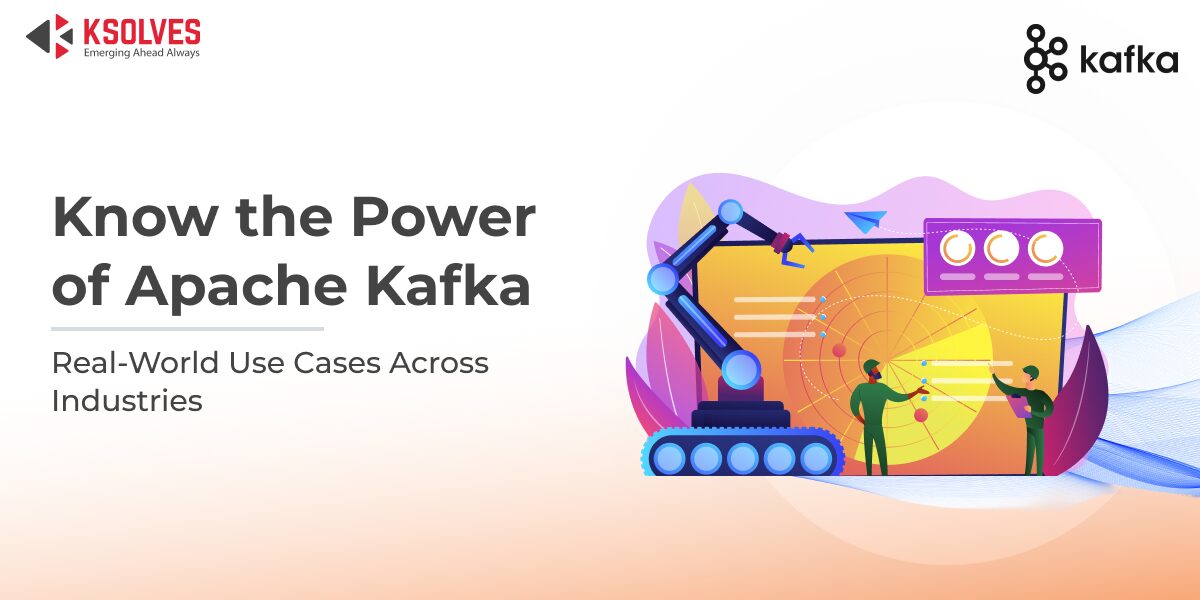
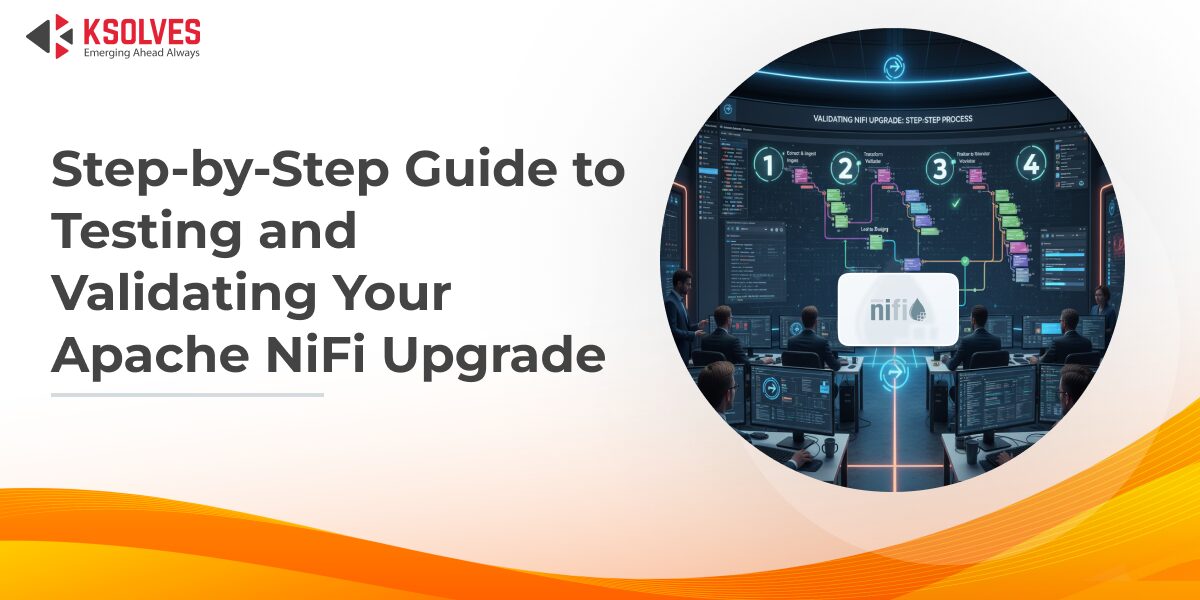




AUTHOR
Big Data
Anil Kushwaha, Technology Head at Ksolves, is an expert in Big Data. With over 11 years at Ksolves, he has been pivotal in driving innovative, high-volume data solutions with technologies like Nifi, Cassandra, Spark, Hadoop, etc. Passionate about advancing tech, he ensures smooth data warehousing for client success through tailored, cutting-edge strategies.
Share with